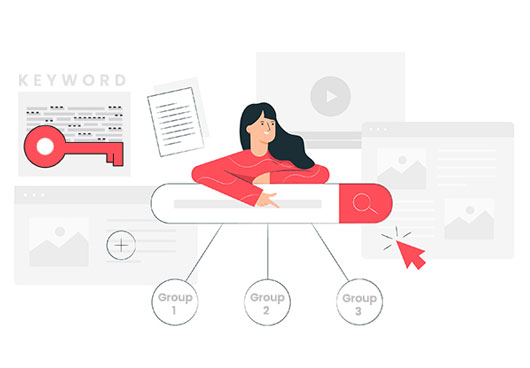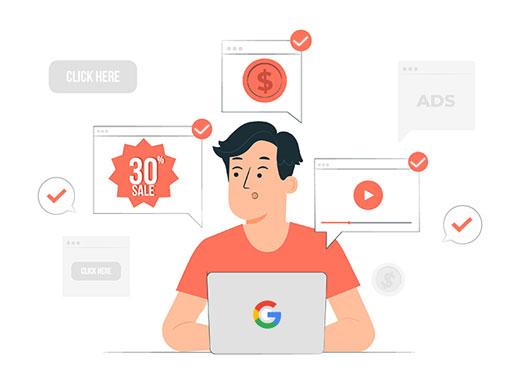Implementing a Customer Lifetime Value (CLTV) Strategy for Neo-Banks
Contributors:
Subhashini Sakthivelu
Published: December 4, 2024

Summary
Customer Lifetime Value (CLTV) is a pivotal metric for neo-banks to measure and optimise their long-term customer relationships. Amid challenges like high competition and acquisition costs, neo-banks can use CLTV strategies to enhance retention, increase revenue, and reduce churn. By leveraging data analytics, personalised services, and innovative approaches like referral programs and predictive analytics, brands like Monzo and Chime have boosted loyalty and profitability. Learn how to calculate CLTV, implement actionable strategies, and make data-driven decisions to secure growth in the competitive neo-banking space.
Customer Lifetime Value (CLTV) is a critical metric in banking that measures the total revenue a customer is expected to generate over their lifetime relationship with a bank. For neo-banks, CLTV becomes even more significant. Operating in a competitive and digital-first environment, neo-banks rely on building meaningful, long-lasting relationships with customers.
By leveraging technology and data, these banks can optimise customer lifetime value in banking to drive growth and profitability.
Why is CLTV Crucial for Neo-Banks?
Neo-banks face unique challenges, from intense competition to high customer expectations. Focusing on customer lifetime value in banking can help overcome these hurdles, creating a
win-win for both the customer and the bank.
Key Challenges Neo-Banks Face:
- Retention Struggles: Neo-banks often need a physical presence to maintain customer engagement. For instance, many users may open accounts but only accept them if they feel strongly connected to the brand.
- Acquisition Costs: Attracting new customers online can be expensive. For example, digital marketing campaigns can cost upwards of $200 per acquisition. Hence, maximising existing customer relationships is essential..
- Profitability Pressure: Ensuring customers remain loyal long enough to generate meaningful revenue is critical.
“Statistics show that a 5% increase in customer retention can boost profits by 25-95%. Neo-banks that strategically increase CLTV can gain a significant edge in driving sustainable growth.”
What are the Benefits of Optimising CLTV in Neo-Banking?
- Improved Customer Retention: Engaging and satisfying customers leads to stronger loyalty. Banks like Chime have invested in features like fee-free overdrafts and early direct deposits, significantly enhancing customer satisfaction and retention rates.
- Cost-Effective Growth: Retaining existing customers is generally less costly than acquiring new ones. For instance, Monzo offers a community-focused approach that fosters loyalty, helping them decrease acquisition costs.
- Higher Revenue Per Customer: Tailored products and services increase cross-selling opportunities. For example, neo-banks can analyse spending patterns to suggest financial products that align with customer needs and increase profitability.
What are the Challenges for Neo-Banks in CLTV?
As a neo-banker, you understand the unique challenges your institution faces. Building trust and loyalty with digitally savvy customers can be tough. However, focusing on CLTV can unlock long-term profitability.
Link Between CLTV and Long-Term Profitability
- By concentrating on CLTV, neo-banks can address retention issues and optimise revenue streams. Studies show that a 5% increase in retention can lead to profit increases of up to 95%, making this a crucial focus area.
How to calculate CLTV?
CLTV=Average Purchase Value×Average Purchase Frequency×Average Customer Lifespan
Where:
- Average Purchase Value is the typical amount a customer spends per transaction.
- Average Purchase Frequency is how often a customer purchases within a specific period.
- Average Customer Lifespan is the average duration a customer continues to purchase from the business.
If the average monthly revenue per customer is $100, the gross margin is 60%, and the monthly churn rate is 5%, the CLTV would be:
CLTV= $100×0.60/0.05 =$1,200
Considerations:
- Discount Rate: Future revenues should be discounted to their present value to account for the time value of money.
- Retention Costs: Include costs associated with retaining customers, such as marketing and support expenses.
- Customer Segmentation: Different customer segments may have varying CLTVs, so segmenting customers can provide more accurate insights.
By accurately calculating and understanding CLTV, businesses can tailor their strategies to maximise customer value, enhance retention efforts, and drive long-term profitability.
What are the Key Strategies to Increase Customer Lifetime Value?
Acquisition: Attracting the Right Customers
- Data-Driven Customer Acquisition: Use predictive analytics to identify high-potential customers. For example, Revolut employs data analysis to target users who are likely to engage with premium features.
- Targeted Marketing Campaigns: Personalized messaging can significantly enhance engagement. N26 utilises tailored email campaigns based on user behaviour to attract the right segments.
- Partnerships and Co-Branding: Collaborate with complementary brands. For instance, neo-banks can partner with fintech apps to offer bundled services, enhancing their value proposition.
- Referral Programs: Incentivize existing customers to refer new ones. Chime has seen success with referral bonuses, creating a network effect that boosts CLTV.
Retention: Keeping Customers Engaged and Loyal
- Personalised Customer Experience: Use data to offer tailored products. For example, Monzo utilises user data to send personalised notifications about spending habits, fostering a sense of care.
- Value-Added Services: Continuously innovate your product suite. Starling Bank offers features like budgeting tools and savings goals that enhance customer loyalty.
- Churn Reduction Strategies: Identify causes of churn and address them proactively. For instance, Revolut uses customer feedback to improve support services, reducing churn rates.
- Continuous Improvement: N26 regularly gathers customer feedback to refine strategies. It also conducts user surveys to understand pain points and enhance user experience.
Expansion: Optimizing Cross-Selling and Upselling
- Identifying high-potential product and service combinations: Analyze customer data to determine the most effective cross-sell and upsell opportunities that align with customer needs and preferences.
- Contextual and data-driven product recommendations: Leverage predictive analytics to provide real-time, personalised product recommendations that add value and increase CLTV.
- Streamlining the cross-selling and upselling process: Ensure a seamless and friction-free experience for customers when exploring and purchasing additional products or services.
- Measuring and optimising the effectiveness of cross-selling efforts: Continuously track the impact of cross-selling and upselling on CLTV and make data-driven adjustments to improve the effectiveness of these strategies.
How To Optimise Improvement and Measurement for Neo-Banksd document?
- Establishing CLTV-based KPIs and tracking mechanisms: Develop a comprehensive set of CLTV-focused metrics, such as customer acquisition cost, churn rate, and cross-sell/upsell conversion rates, to monitor the performance of your strategies.
- Regularly reviewing and optimising CLTV strategies: Continuously analyse the effectiveness of your CLTV initiatives and make timely adjustments to ensure they remain aligned with changing customer needs and market dynamics.
- Incorporating customer feedback and market insights: Use customer insights to refine strategies. Monzo regularly reviews community feedback to enhance their offerings.
- Leveraging AI and machine learning for predictive analytics: Utilise advanced data analytics tools to uncover deeper insights, predict customer behaviour, and make more informed CLTV-driven decisions.
What Role does Data play in CLTV for Neo-Banksd Documents?
- Customer Segmentation: Big data allows neo-banks to segment their customer base effectively, tailoring services to meet specific needs—for instance, Chime segments users by spending habits to offer personalised financial advice.
- Predictive Analytics: Neo-banks can employ predictive analytics to anticipate customer needs and behaviours, allowing for proactive engagement strategies. For example, N26 uses predictive models to suggest financial products at optimal times.
Examples of CLTV Success in Neo-Banks
- Monzo: By focusing on community engagement and transparent practices, Monzo has built a loyal customer base, leading to high CLTV. Reports indicate that many users consider Monzo their primary bank, showcasing strong engagement.
- Chime: With features like early direct deposits and fee-free overdrafts, Chime has enhanced customer satisfaction and retention. The rapid growth in user numbers demonstrates Chime’s effectiveness in increasing CLTV.
In Conclusion
Neo-banks can enhance customer engagement and loyalty by leveraging data analytics to personalise services, adopting a customer-centric approach, and learning from industry leaders. Prioritising CLTV boosts revenue and strengthens a bank’s position in the competitive financial market.
As a tech-native product studio, upGrowth simplifies the complexities of digital transformation, cloud computing, AI, IoT, and data analytics to enhance your business processes and operations. Our expertise spans platform development, product strategy and design, digital transformation projects, and web applications—all crafted to boost efficiency, spark innovation, and elevate customer experiences.
FAQs
1. What is Customer Lifetime Value (CLTV), and why is it critical for neo-banks?
CLTV measures a customer’s total revenue based on their relationship with a bank. For neo-banks, focusing on CLTV is essential for sustainable growth and profitability, enhancing customer loyalty and optimising marketing investments.
2. How can neo-banks calculate CLTV accurately?
Neo-banks can calculate CLTV by analysing transaction data, engagement metrics, and retention rates. Employing predictive analytics helps forecast future customer behaviour, ensuring updated and relevant calculations.
3. What strategies can neo-banks implement to maximise Customer Lifetime Value?
Strategies include offering personalised financial products, implementing loyalty programs, and providing exceptional customer support. Continuous innovation and adapting to feedback are also vital.
4. How does enhancing customer experience impact CLTV in neo-banks?
A superior customer experience leads to higher satisfaction and loyalty, directly boosting CLTV. User-friendly interfaces and responsive support encourage longer relationships, increasing revenue potential.
5. What role does technology play in tracking and improving CLTV for neo-banks?
Technology enables efficient data collection and analysis, providing insights into customer behaviour. Advanced analytics and AI tools facilitate targeted marketing and personalised services, enhancing CLTV.
6. How do product offerings and pricing strategies affect CLTV in the neo-banking sector?
Diverse product offerings meet customer needs, encouraging longer relationships. Competitive pricing builds trust and satisfaction, while regular updates based on feedback ensure continued relevance and value.
About the Author
Copywriter
Subhashini Sakthivelu is a copywriter at upGrowth, where she plays a pivotal role in leading and executing impactful marketing projects. With a background in various marketing positions at prominent companies, Subhashini brings a wealth of expertise in crafting compelling content that drives engagement. Her strategic thinking and creativity have contributed significantly to uG’s successful campaigns.
 Growth Strategy and Planning
Growth Strategy and Planning Inbound Growth
Inbound Growth Growth Hacking
Growth Hacking Search Engine Optimization
Search Engine Optimization Paid and Performance Marketing
Paid and Performance Marketing Social Media Marketing
Social Media Marketing AI-Driven Growth Strategy
AI-Driven Growth Strategy AI-Native Workflow Automation
AI-Native Workflow Automation Generative Engine Optimization
Generative Engine Optimization

 Case Study
Case Study Tools
Tools Growth Tools
Growth Tools Custom GPT's
Custom GPT's





















Leave a Reply